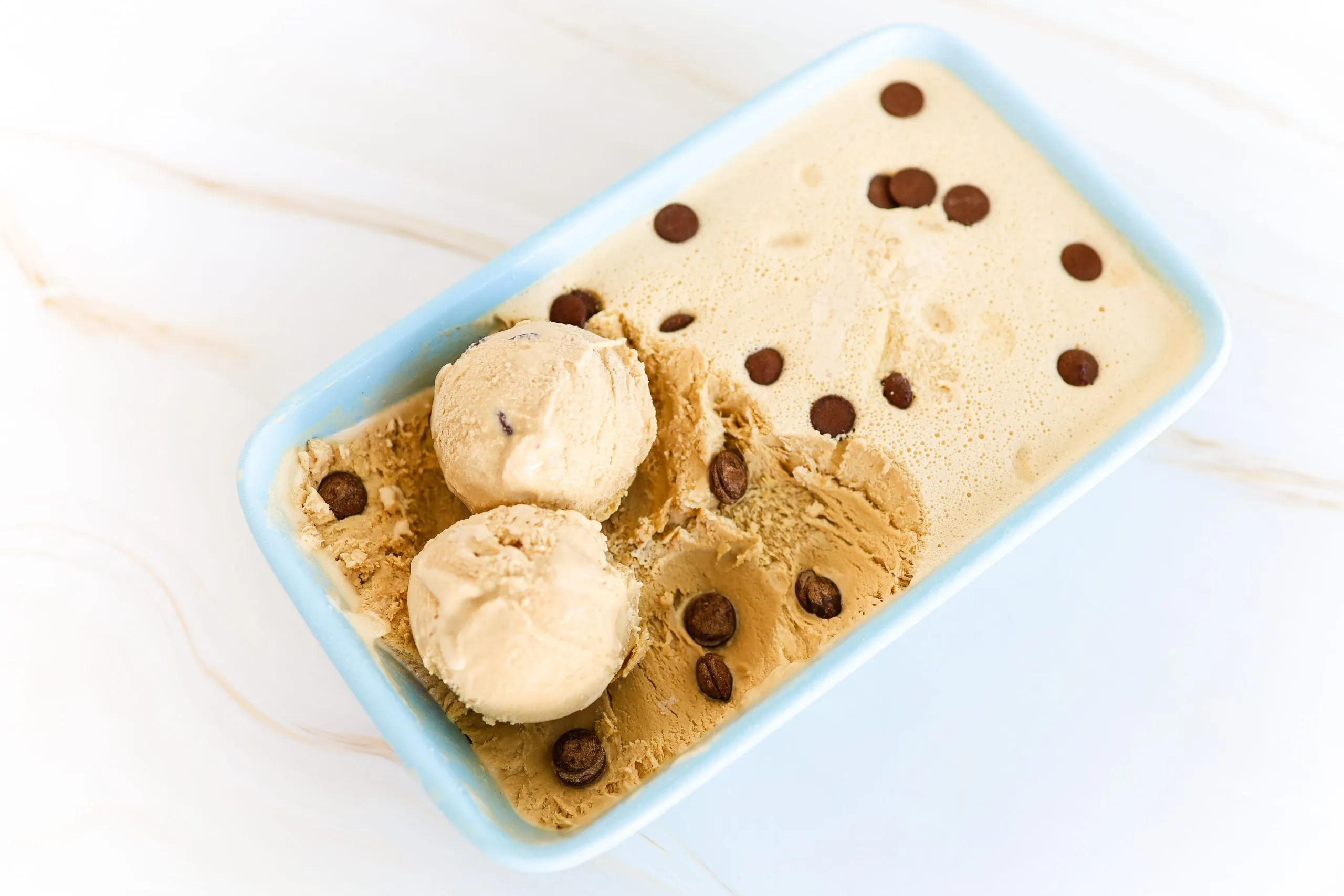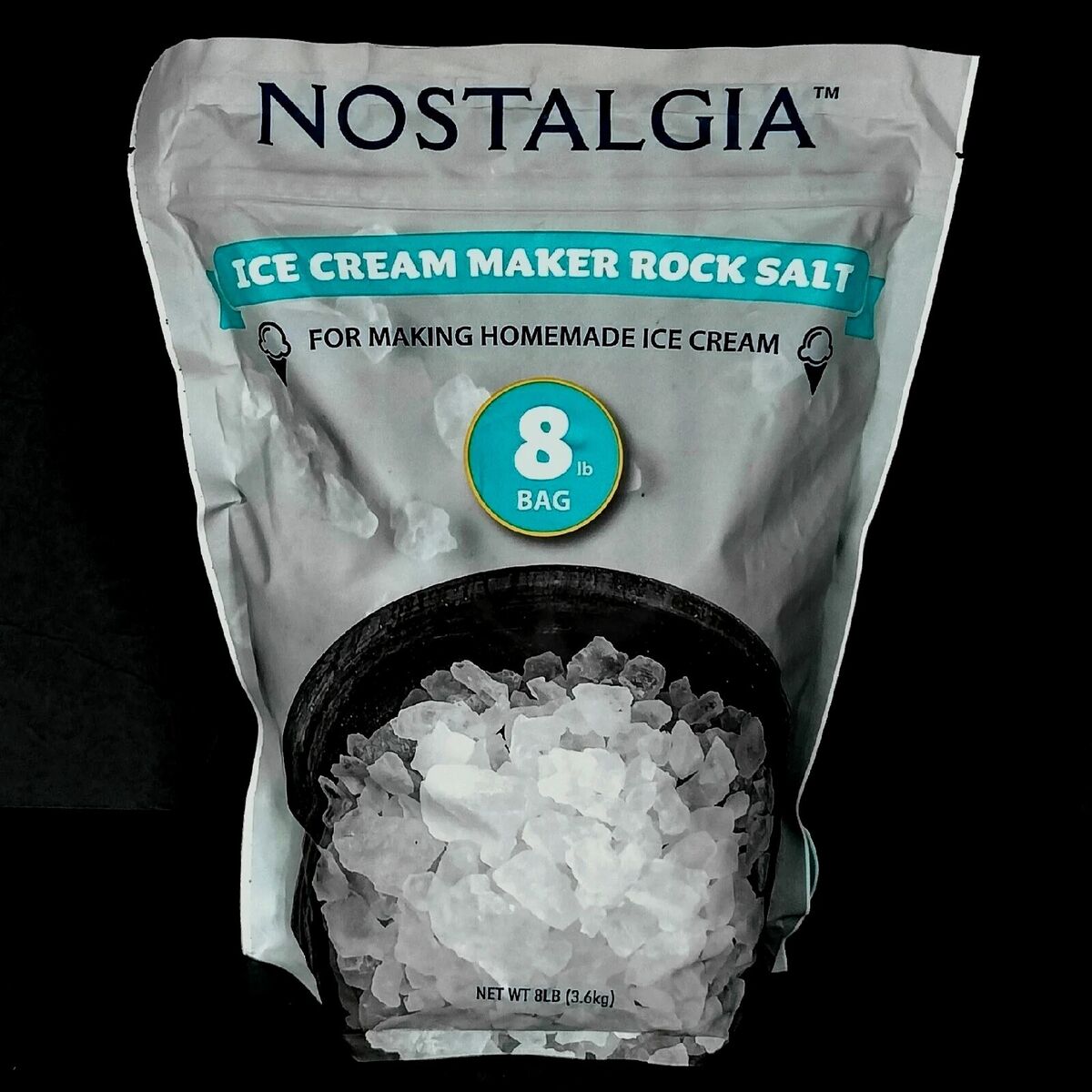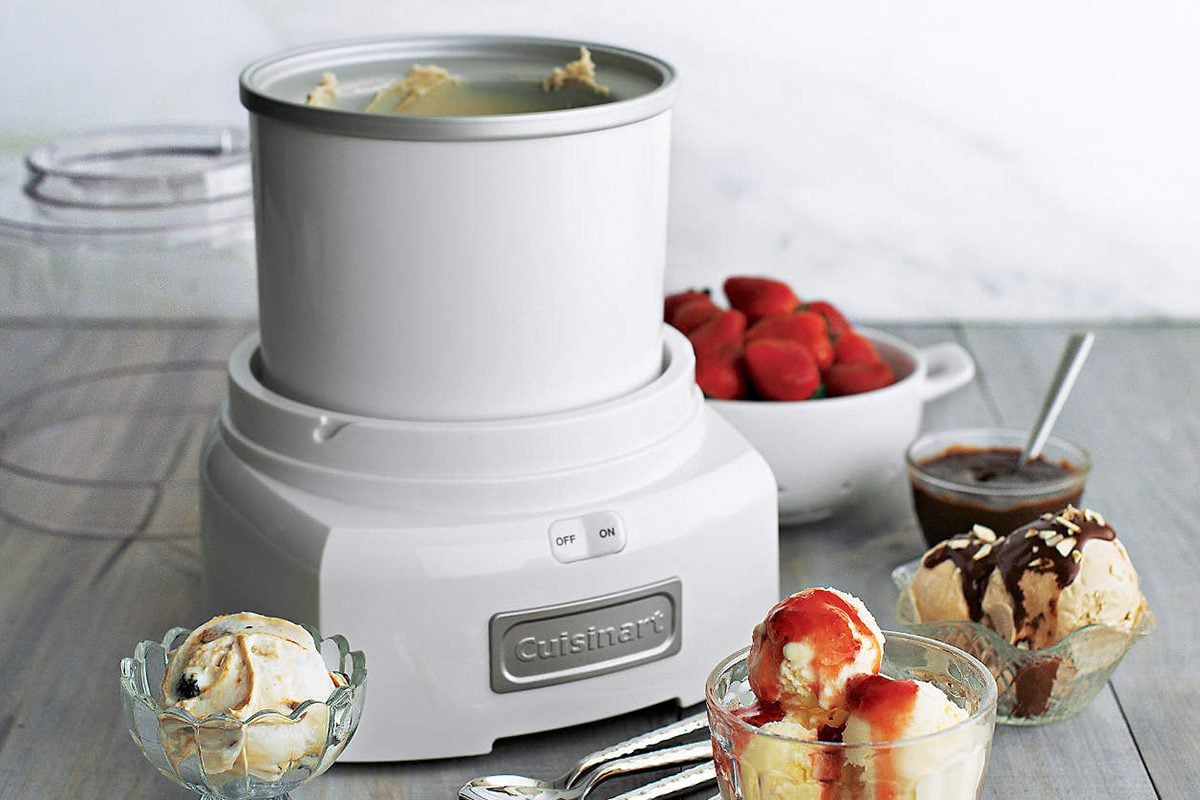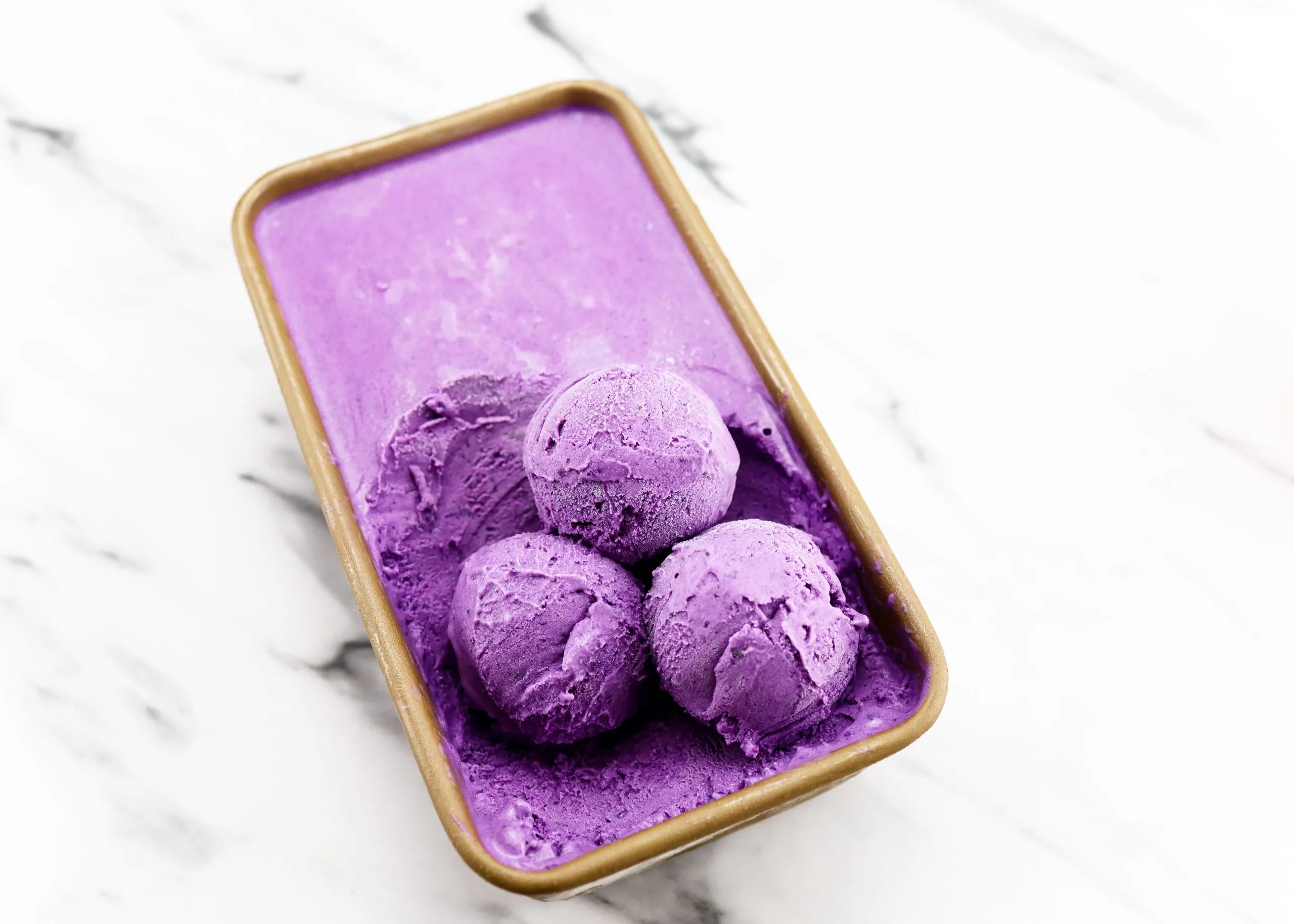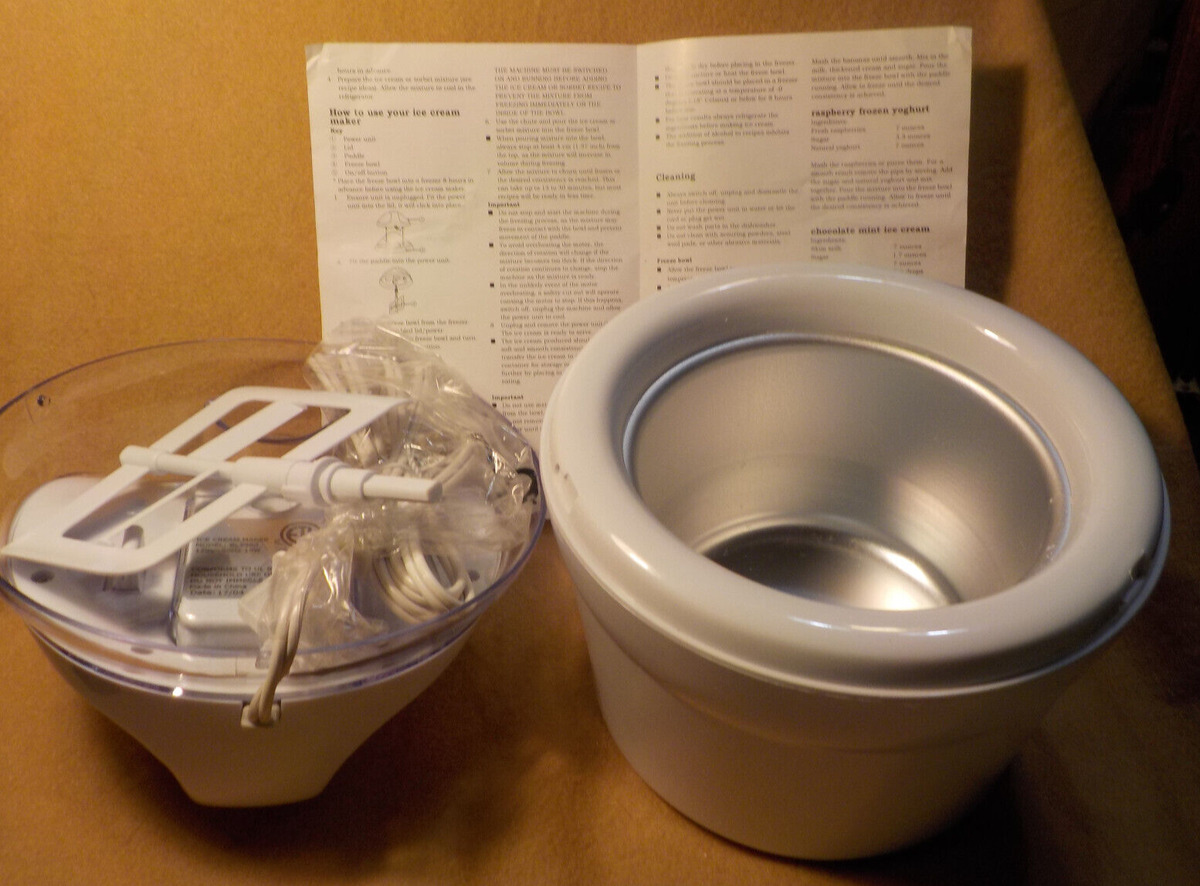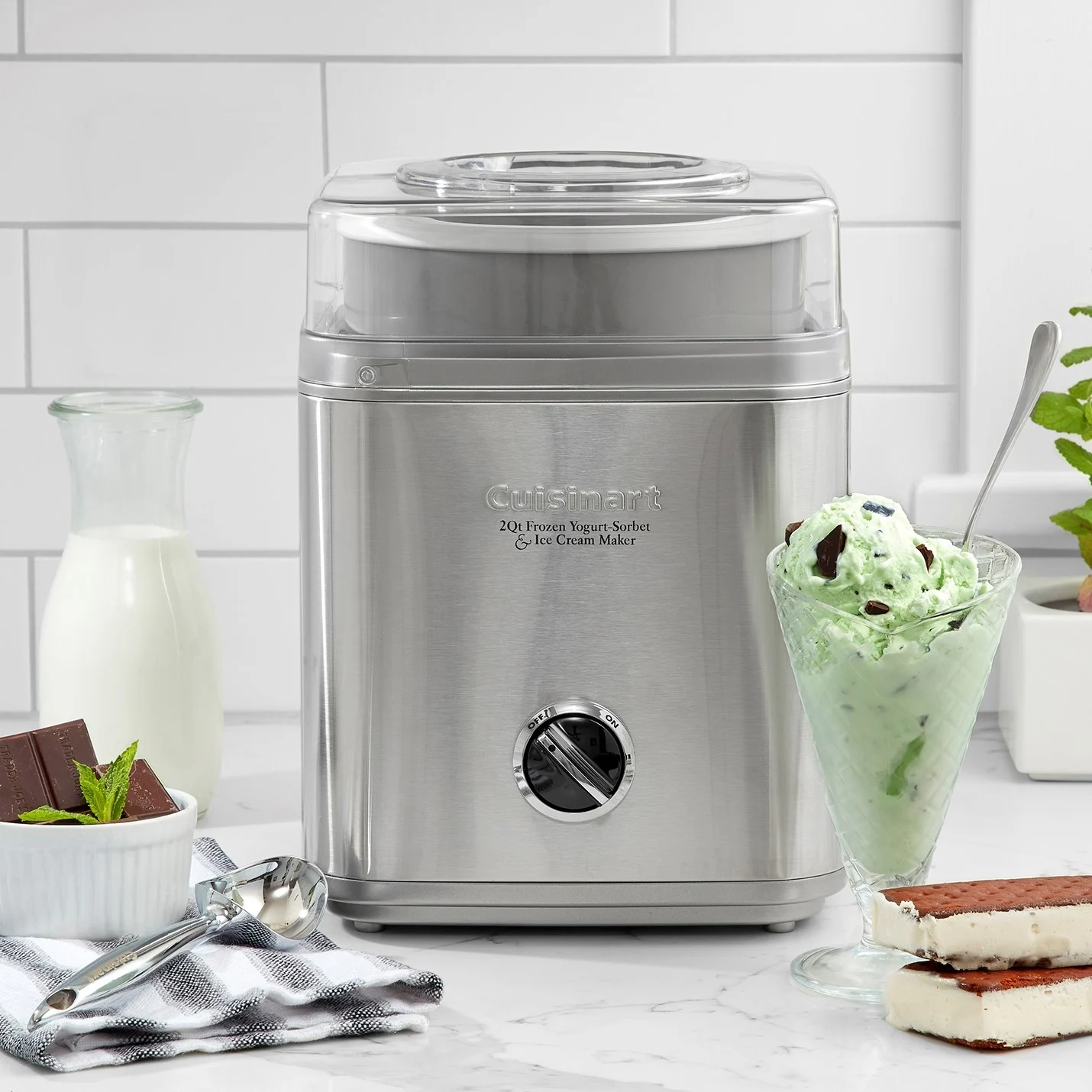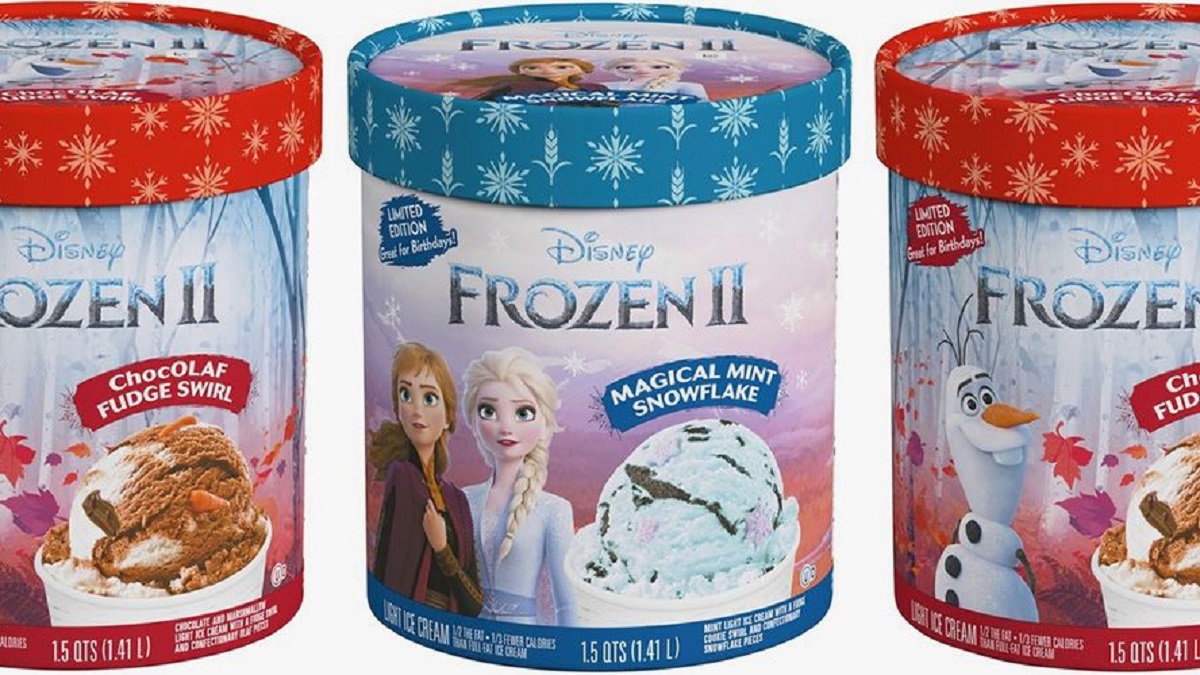Introduction
Welcome to the wonderful world of homemade ice cream! Whether you’re a seasoned ice cream lover or new to the delicious treat, making your own ice cream allows you to unleash your creativity and customize flavors to your liking. While traditional ice cream recipes often call for heavy cream, there are plenty of alternatives that can be used to substitute cream without compromising on taste and texture.
Substituting cream in homemade ice cream can be particularly beneficial for those with dietary restrictions or preferences. From dairy-free options to lower-fat alternatives, there are numerous ingredients that can be used to create a creamy and satisfying ice cream base. So, whether you’re lactose-intolerant, following a vegan diet, or simply looking to reduce your intake of heavy cream, you’re in for a treat!
In this article, we will explore a range of options to substitute cream in homemade ice cream. Each alternative has its own unique qualities, and the choice ultimately depends on personal taste and dietary preferences. So, grab your ice cream maker and prepare to experiment with these delightful alternatives!
Substituting Cream in Homemade Ice Cream
When it comes to substituting cream in homemade ice cream, there are numerous options to choose from. Each alternative provides its own distinct flavor and texture, allowing you to create a delicious frozen treat. So, let’s explore some of the fantastic substitutes:
-
Milk
Milk is a readily available and commonly used substitute for cream in homemade ice cream. While it may result in a slightly lighter and less creamy texture, it is an excellent choice for those seeking a lower-fat option. For best results, opt for whole milk, as it offers a richer flavor than lower-fat varieties.
-
Coconut Milk
Coconut milk is a fantastic alternative for those who prefer a dairy-free or vegan option. It lends a rich and creamy texture to your ice cream, along with a subtle tropical flavor. Be sure to use full-fat coconut milk for the best results.
-
Cashew Milk
Cashew milk, made from blending soaked cashews and water, is another great non-dairy substitute for cream in homemade ice cream. It offers a creamy texture and a slightly nutty taste, making it an excellent choice for a variety of flavors.
-
Almond Milk
Almond milk is a popular and easily accessible option for those looking to substitute cream in homemade ice cream. It has a mild flavor that pairs well with a wide range of flavorings, while providing a creamy consistency.
-
Soy Milk
Soy milk, derived from soybeans, is another versatile and widely available alternative to cream. It has a creamy texture and a neutral taste that allows the other ingredients in your ice cream to shine.
-
Greek Yogurt
Greek yogurt is a protein-packed substitute for cream that adds a tangy flavor to your homemade ice cream. It offers a thick and creamy texture, making it a great choice for those who still want a rich mouthfeel.
-
Silken Tofu
Silken tofu is a unique option that may surprise you. When blended, it becomes smooth and creamy, making it an excellent substitute for cream in vegan ice cream recipes. It is also virtually tasteless, allowing the other ingredients to shine.
-
Sweetened Condensed Milk
Sweetened condensed milk is a concentrated and sweetened dairy product that can be used as a substitute for cream in homemade ice cream. It offers a rich, velvety texture and provides a touch of sweetness.
-
Evaporated Milk
Evaporated milk is another dairy-based option that can be used in place of cream. It is made by removing some of the water content from milk, resulting in a thicker and creamier consistency.
-
Buttermilk
Buttermilk, with its tangy flavor, can be used to create a unique ice cream experience. It will lend a creamy texture and a subtle acidity to your homemade ice cream, perfect for flavor combinations like fruits or citrus.
Experiment with these substitutes and find the options that work best for you. Whether you’re looking for a dairy-free alternative, a lower-fat option, or simply want to try something new, these alternatives will help you create a delicious homemade ice cream that satisfies your cravings.
Milk
Milk is a versatile and commonly used substitute for cream in homemade ice cream. It provides a lighter and less creamy texture compared to traditional cream-based recipes, but it still produces delightful results. Milk is a readily available ingredient that can be found in most households, making it a convenient option when you’re craving a homemade frozen treat.
Using milk as a substitute for cream can be an excellent choice for those who want a lower-fat alternative. While heavy cream contains a high amount of saturated fat, whole milk provides a lighter option while still maintaining a creamy consistency. For the best results, opt for whole milk rather than reduced-fat or skim milk, as it offers a richer flavor and creamier texture.
To incorporate milk into your ice cream base, follow your favorite ice cream recipe and replace the cream with an equal amount of milk. Keep in mind that the resulting texture may be slightly less creamy than when using cream, but the flavor will still be delicious. If you prefer a richer taste, try adding a small amount of melted butter to compensate for the lower fat content.
Milk works well with a wide range of flavors, making it a versatile substitute in homemade ice cream. Consider adding extracts, fruits, chocolate, or other mix-ins to create your desired flavor profile. From classic vanilla to indulgent chocolate, milk-based ice creams can be customized to suit your preferences.
If you are lactose intolerant or follow a vegan lifestyle, you can also opt for non-dairy milk options such as almond milk, coconut milk, or soy milk. These alternatives offer their own unique flavors and textures, allowing you to create a dairy-free ice cream that is just as delicious.
So, the next time you’re in the mood for homemade ice cream but don’t have cream on hand, reach for a carton of milk. It’s a versatile and accessible substitute that will still satisfy your craving for a creamy frozen treat. Enjoy experimenting with different flavors and mix-ins to create your own delectable milk-based ice cream recipes!
Coconut Milk
For those looking for a dairy-free or vegan substitute for cream in homemade ice cream, coconut milk is an excellent choice. It offers a creamy texture and imparts a subtle tropical flavor to your frozen delights. Coconut milk is derived from the flesh of mature coconuts and is a popular ingredient in various cuisines around the world.
When selecting coconut milk for your ice cream, it is important to choose full-fat coconut milk for the best results. Full-fat coconut milk has a higher fat content, which contributes to a richer and creamier ice cream texture. Avoid using light or reduced-fat coconut milk, as it may result in a less satisfying consistency.
To incorporate coconut milk into your ice cream base, simply replace the cream in your recipe with an equal amount of coconut milk. You can also combine coconut milk with other non-dairy alternatives, such as almond or cashew milk, to add even more creaminess to your ice cream.
Coconut milk pairs well with a variety of flavorings, making it a versatile substitute in homemade ice cream. You can create classic flavors like coconut, chocolate chip, or strawberry coconut, or get creative with tropical combinations like piña colada or mango coconut. The natural sweetness of coconut milk also means you can use less added sweeteners, making it a healthier option for those watching their sugar intake.
If you want to enhance the coconut flavor in your ice cream, consider adding shredded coconut to your mixture or toasting it for added crunch. You can also incorporate complementary flavors like lime zest, ginger, or rum to create more complex and unique coconut-based ice cream recipes.
Coconut milk-based ice creams can take a bit longer to freeze compared to dairy-based ice creams, so give them a little extra time in your ice cream maker or freezer. Additionally, coconut milk can leave a subtle coconut flavor and aroma on your ice cream maker, so be sure to clean it thoroughly after each use.
So, if you’re looking for a creamy and tropical alternative to cream in your homemade ice cream, give coconut milk a try. It’s a deliciously satisfying option that caters to those with dairy restrictions or anyone who simply enjoys the unique flavor of coconut.
Cashew Milk
Cashew milk is a fantastic non-dairy substitute for cream in homemade ice cream. Made by blending soaked cashews with water, cashew milk offers a creamy and nutty flavor that adds a unique touch to your frozen treats. It is a popular choice for those following a vegan or dairy-free lifestyle, as well as individuals with lactose intolerance.
To make cashew milk, simply soak cashews in water overnight or for several hours until they become soft. Drain the soaked cashews and blend them with fresh water until smooth and creamy. The resulting cashew milk can be used as a one-to-one replacement for cream in your ice cream recipes.
The natural richness of cashews lends a luxurious texture to your homemade ice cream. It brings a subtle nutty flavor that pairs well with a variety of mix-ins and enhancements. Whether you enjoy chocolate, fruits, or spices, cashew milk can accommodate various flavor combinations.
Not only does cashew milk provide a creamy base for your ice cream, but it also contains healthy fats, fiber, and protein. These nutritional benefits make your indulgence a bit more guilt-free, especially compared to heavy cream. Cashew milk is also lower in calories compared to cream, making it a preferred option for those watching their calorie intake.
When using cashew milk in your ice cream, it is important to note that it may not freeze as firm as traditional dairy ice cream. Cashew milk-based ice creams tend to have a softer texture and can sometimes become slightly icy when frozen for an extended period. To counteract this, you can add a small amount of coconut oil or a thickening agent, such as arrowroot powder or xanthan gum, to improve the texture.
Another benefit of using cashew milk is that it provides a smooth and creamy consistency without overpowering the flavor of your ice cream. This allows the other ingredients, such as fruits or extracts, to shine more prominently. So if you’re looking for a subtle nutty undertone in your homemade ice cream, cashew milk is a fantastic choice.
Experiment with different flavor combinations, such as cashew milk with caramel and sea salt, or cashew milk with coffee and chocolate chunks. Let your imagination run wild and enjoy the smooth and creamy delights of cashew milk-based ice cream.
Almond Milk
Almond milk is a popular and widely available non-dairy substitute for cream in homemade ice cream. Made from ground almonds and water, almond milk offers a creamy texture and a mild, slightly nutty flavor. It is a great option for those following a vegan or dairy-free lifestyle, as well as individuals who are lactose intolerant.
Almond milk can be used as a one-to-one replacement for cream in your ice cream recipes. Its subtle flavor allows it to blend seamlessly with other ingredients, letting the flavors of your chosen mix-ins and flavorings shine. Whether you’re making classic flavors like vanilla or experimenting with unique combinations, almond milk provides a versatile base for your homemade ice cream creations.
One advantage of using almond milk in your ice cream is its low calorie and fat content compared to using heavy cream. If you’re looking for a lighter option that still delivers a creamy texture, almond milk is an excellent choice. However, it’s important to note that the lower fat content may result in a slightly icier texture in your finished ice cream.
If you prefer a richer mouthfeel, you can enhance the creaminess by adding a few tablespoons of melted coconut oil or unsweetened almond butter to your ice cream mixture. This will help to create a smoother texture and add a touch of richness to your almond milk-based ice cream.
When using almond milk in your ice cream, it’s essential to choose unsweetened almond milk to have better control over the sweetness of your final creation. However, if you prefer a sweeter ice cream, you can opt for sweetened almond milk or add natural sweeteners such as maple syrup or agave nectar to your desired taste.
Almond milk freezes relatively well and maintains a stable texture in your homemade ice cream. However, if you find that the texture is a bit icier than desired, you can incorporate ingredients like cornstarch or arrowroot powder to improve the creaminess. These thickeners help to prevent crystal formation and give your ice cream a smoother consistency.
With almond milk, you have the freedom to get creative with flavors and mix-ins. Consider combining almond milk with fresh fruits, extracts, or even chocolate for delightful and refreshing ice cream varieties. The mild and nutty flavor of almond milk pairs exceptionally well with ingredients like strawberries, coconut, or almond extract.
So, whether you follow a dairy-free diet or simply want to try a lighter alternative, almond milk is an excellent substitute for cream in homemade ice cream. Indulge in the creamy goodness of almond milk-based ice cream and savor the versatility it brings to your frozen desserts.
Soy Milk
Soy milk is a versatile and widely available substitute for cream in homemade ice cream. It is made from soybeans and water, and it offers a creamy texture and a mild flavor that is perfect for creating delicious frozen treats. Soy milk is an excellent option for those following a vegan or dairy-free lifestyle, as well as individuals who have lactose intolerance.
Using soy milk as a substitute for cream in homemade ice cream is simple. You can replace the cream in your ice cream recipe with an equal amount of soy milk. This substitution allows you to enjoy a creamy texture without sacrificing taste or compromising on dietary preferences.
Soy milk offers a neutral flavor, making it adaptable to a wide range of ice cream flavors. You can keep it simple with classic flavors like vanilla or chocolate, or you can experiment with unique combinations such as matcha green tea or roasted banana soy. The options are endless, and soy milk provides a blank canvas to let your imagination run wild.
One advantage of using soy milk is its high protein content. Soy milk contains plant-based proteins, which can add a nutritional boost to your homemade ice cream. This makes it a great choice for those looking to incorporate more protein into their desserts.
While soy milk can produce a creamy texture, it is important to note that it may result in a slightly icier consistency compared to traditional dairy-based ice creams. To help combat this, you can add small amounts of fat, such as coconut oil or melted cocoa butter, to the mixture. Additionally, incorporating thickeners like xanthan gum or a small amount of cornstarch can help improve the overall creaminess of the ice cream.
When using soy milk in your ice cream recipes, it is essential to choose unsweetened soy milk. This allows you to control the sweetness of your ice cream and make adjustments based on your preference. However, if you prefer a sweeter ice cream, you can use sweetened soy milk or add natural sweeteners like agave syrup or honey.
Enjoy the versatility of soy milk by combining it with various flavorings, such as fresh fruits, extracts, or even spices like cinnamon or nutmeg. The mild flavor of soy milk allows the other ingredients to shine, resulting in delectable homemade ice cream creations.
So, whether you’re looking for a dairy-free or vegan alternative or simply want to try something new, soy milk is an excellent option for substituting cream in your homemade ice cream. Embrace the creaminess and adaptability of soy milk to create delightful frozen treats that cater to your dietary preferences and taste preferences.
Greek Yogurt
Greek yogurt is a protein-packed option that can be used as a substitute for cream in homemade ice cream. It offers a tangy flavor and a thick, creamy texture that can enhance the richness of your frozen treats. Greek yogurt is a popular choice for those looking for a healthier alternative or seeking to incorporate more protein into their desserts.
To use Greek yogurt as a substitute for cream in your ice cream, simply replace the cream with an equal amount of Greek yogurt in your recipe. This substitution adds a tangy element to your ice cream and contributes to a creamy consistency that is a delightful contrast to the sweetness of your flavors.
Greek yogurt complements a variety of ice cream flavors, from fruity combinations to chocolate or coffee-based creations. Its tanginess can help balance the sweetness of other ingredients, creating a well-rounded flavor profile. Consider adding fresh berries, honey, or nuts to your Greek yogurt-based ice cream to enhance the taste and texture.
One advantage of using Greek yogurt is its high protein content. Greek yogurt is strained, resulting in a thicker consistency and a higher protein concentration compared to regular yogurt. This protein boost can make your ice cream more filling and satisfying, making it a great choice for those looking for a nutritious treat.
When using Greek yogurt in your ice cream, keep in mind that it may freeze slightly harder compared to traditional ice creams due to its low fat content. To help combat this, you can add a small amount of melted coconut oil or incorporate a thickener like xanthan gum or cornstarch to improve the texture and prevent excessive hardness.
If you’re looking to reduce the sugar content of your ice cream, Greek yogurt can be a helpful ingredient. Its natural tanginess allows you to reduce the amount of added sweeteners without compromising the overall taste. Additionally, you can experiment with using flavored Greek yogurt, like vanilla or honey, to eliminate the need for additional sweeteners.
Don’t be afraid to get creative with Greek yogurt-based ice cream. Consider blending in other ingredients such as cocoa powder, diced fruits, or crushed cookies to add texture and enhance the flavor. The versatility of Greek yogurt lends itself well to a variety of taste combinations.
So, if you’re looking for a protein-packed and creamy alternative to cream in your homemade ice cream, give Greek yogurt a try. It adds a tangy twist to your frozen delights, making them satisfying and flavorful while providing a boost of protein.
Silken Tofu
Silken tofu may not be the first ingredient that comes to mind when thinking about making homemade ice cream, but it is a surprisingly versatile substitute for cream. Silken tofu is smooth and creamy in texture, making it an excellent choice for creating a silky-smooth base for your frozen treats. It is a perfect option for those following a vegan or dairy-free diet.
When using silken tofu as a substitute for cream in homemade ice cream, you will need to blend it with other ingredients to create a creamy and flavorful base. Combine the silken tofu with your choice of milk (such as almond or coconut milk), sweeteners, and flavorings in a blender or food processor until smooth and well combined. This creates a creamy mixture that can be used as the base for your ice cream.
The mild flavor of silken tofu allows it to blend seamlessly with other ingredients, allowing the flavors of your chosen mix-ins and flavorings to shine. It also has a neutral taste, which means that you can experiment with various flavor combinations without the tofu overpowering the overall taste of the ice cream.
Silken tofu is an excellent choice for creating vegan ice cream with a creamy consistency. Its high protein content adds a nutritional element to your frozen delights, which can help to make your ice cream more filling and satisfying. Additionally, using silken tofu as a cream substitute reduces the fat content and calories in your ice cream while still retaining a rich texture.
One thing to keep in mind when using silken tofu is that it tends to freeze harder than traditional dairy-based ice creams. To counteract this, consider adding a small amount of fat, such as coconut oil or melted cocoa butter, to the mixture. This will help improve the texture and prevent excessive hardness.
Experiment with different flavors and mix-ins to create unique and delicious silken tofu-based ice creams. Whether you enjoy fruity combinations, chocolate variations, or nut-infused flavors, silken tofu can be easily customized to suit your taste preferences.
So, if you’re in search of a creamy and vegan alternative to cream in your homemade ice cream, don’t overlook silken tofu. It offers a smooth texture, a neutral taste, and a healthy boost of protein. Let your creativity soar and enjoy the dairy-free delights that silken tofu can bring to your frozen creations.
Sweetened Condensed Milk
Sweetened condensed milk is a rich and sweet dairy product that can be used as a substitute for cream in homemade ice cream. It adds a velvety texture and a touch of sweetness to your frozen treats, making it a popular choice for many ice cream enthusiasts.
Using sweetened condensed milk as a substitute is simple and convenient. It already contains sugar, so there’s no need to add any additional sweeteners to your ice cream mixture. Replace the cream in your recipe with an equal amount of sweetened condensed milk, and you’ll have a luscious base for your homemade ice cream.
One advantage of using sweetened condensed milk is its high sugar content, which helps to inhibit the formation of ice crystals and gives your ice cream a smooth texture. This is especially beneficial if you don’t have an ice cream maker, as it helps prevent the ice cream from becoming too icy during the freezing process.
The richness of sweetened condensed milk adds a luxurious mouthfeel to your ice cream. It provides a creamy consistency that works well with a variety of flavors. From classic vanilla to indulgent chocolate or caramel, sweetened condensed milk acts as a versatile base that complements a wide range of mix-ins and toppings.
When using sweetened condensed milk, keep in mind that it is quite sweet on its own. Adjust the amount of additional sugar or sweeteners accordingly in your ice cream recipe to avoid an overly sweet final result. You can also balance the sweetness by incorporating acidic ingredients like lemon juice or adding flavorings that provide a contrasting taste.
Sweetened condensed milk is popular for creating no-churn ice cream recipes. Mix it with your desired flavorings and whipped cream or other dairy substitutes, freeze the mixture in a container, and enjoy creamy homemade ice cream without the need for an ice cream maker.
It’s important to note that sweetened condensed milk is not suitable for those with lactose intolerance or following a vegan diet, as it is made from cow’s milk and contains added sugar. However, there are vegan and dairy-free alternatives available that can be used as substitutes for sweetened condensed milk in your ice cream recipes.
So, if you’re looking to add a touch of sweetness and creaminess to your homemade ice cream, consider using sweetened condensed milk. Indulge in the rich and luscious flavors it brings to your frozen treats and savor the delightful texture it adds to every scoop.
Evaporated Milk
Evaporated milk is a concentrated dairy product that can be used as a substitute for cream in homemade ice cream. It has a rich and creamy texture, making it an ideal choice for creating smooth and decadent frozen treats. Evaporated milk is made by removing some of the water content from regular milk, resulting in a thicker consistency and a more concentrated flavor.
When using evaporated milk as a substitute for cream in your ice cream recipe, simply replace the cream with an equal amount of evaporated milk. Its high fat content lends a creamy mouthfeel to your ice cream, creating a luscious and indulgent treat.
Evaporated milk works well with a variety of flavors, whether you prefer classic options like vanilla or more adventurous combinations like cookies and cream or salted caramel. Its slightly caramelized taste can add a unique depth of flavor to your ice cream, enhancing the overall richness.
One advantage of using evaporated milk in your ice cream is its ability to stabilize the mixture, preventing ice crystals from forming. This helps to create a smooth and creamy texture, even when using a basic ice cream maker or freezing method. Additionally, evaporated milk contains less water than regular milk or cream, resulting in a creamier outcome.
Due to its higher fat content, evaporated milk is not suitable for those looking for a lower-fat alternative. It is also not suitable for individuals with lactose intolerance or following a vegan diet, as it contains dairy. However, there are vegan and lactose-free alternatives available that can be used as substitutes for evaporated milk in your ice cream recipes.
If you prefer a lighter flavor, you can opt for low-fat or non-fat evaporated milk. While it may result in a slightly less creamy texture, it can still produce delicious homemade ice cream with a lower fat content compared to using regular cream.
To further enhance the creaminess and richness of your evaporated milk-based ice cream, consider adding additional fat sources, like melted butter or coconut oil. This can help compensate for any difference in fat content and ensure a satisfying and luxurious texture.
Evaporated milk-based ice creams tend to have a longer shelf life compared to traditional homemade ice creams. The process of evaporating the milk helps to extend its shelf life, allowing your homemade ice cream to stay fresh for a longer period.
So, if you’re looking for a creamy and rich alternative to cream in your homemade ice cream, give evaporated milk a try. Delight in the velvety texture and enhanced flavors it brings to your frozen creations, and indulge in creamy goodness with every spoonful.
Buttermilk
Buttermilk is a tangy and creamy substitute for cream that adds a unique flavor profile to homemade ice cream. Traditionally known for its use in baking, buttermilk works equally well in frozen desserts. It provides a rich and tangy taste that pairs exceptionally well with fruity or citrusy flavors, making it a great option for creating refreshing and zesty ice creams.
Using buttermilk as a substitute for cream adds a delightful tanginess to your ice cream base. It gives your frozen treats a slightly acidic edge, which balances the sweetness and offers a more complex flavor. Buttermilk’s characteristic tang can enhance the taste and provide a refreshing twist that sets your ice cream apart.
When incorporating buttermilk into your ice cream recipe, simply replace part or all of the cream in your base with an equal amount of buttermilk. Adjust the sweetness to accommodate for the tanginess of the buttermilk by adding a touch more sugar or sweetener if desired. Keep in mind that buttermilk has a thinner consistency than cream, so the final texture may be slightly different.
Buttermilk pairs exceptionally well with fruit-based ice creams. The tangy flavor harmonizes with fresh berries, peaches, and tropical fruits such as pineapple or mango. You can also experiment with incorporating spices like cinnamon or nutmeg to create intriguing flavor combinations.
If you prefer a richer and creamier texture, you can combine buttermilk with other dairy products like Greek yogurt or regular yogurt. This combination boosts the creaminess of your ice cream while maintaining the distinct tanginess of the buttermilk.
Another advantage of using buttermilk is its ability to create a lighter and fluffier texture in your ice cream. The acidity in buttermilk reacts with the leavening agents, resulting in a softer and smoother consistency. If you enjoy a more velvety texture, buttermilk-based ice cream may be the perfect choice for you.
Buttermilk-based ice creams tend to freeze a bit harder than traditional cream-based ice creams. To counteract this, you can add a small amount of alcohol, such as vodka or a liqueur, to your mixture. Alcohol lowers the freezing point and helps prevent the ice cream from becoming overly icy and firm.
So, if you’re looking to add a tangy twist to your homemade ice cream, consider using buttermilk. Embrace the unique flavors that buttermilk brings and enjoy the creamy yet refreshing taste of buttermilk-based ice creams.
Conclusion
Substituting cream in homemade ice cream opens up a world of possibilities, allowing you to cater to dietary preferences and explore new flavors and textures. Whether you’re looking for a dairy-free alternative, a lower-fat option, or simply want to try something different, there are plenty of ingredients that can be used to replace cream in your ice cream recipes.
From milk to coconut milk, cashew milk to almond milk, soy milk to Greek yogurt, silken tofu to sweetened condensed milk, and even buttermilk, each substitute offers its own unique qualities and contributes to the overall taste and texture of your homemade ice cream. Whether you’re seeking creaminess, tanginess, richness or a lighter alternative, there’s a substitute that can meet your needs.
Experimentation is key when substituting cream in ice cream recipes. Customize your flavors by adding fruits, extracts, spices, or other mix-ins to create your ideal frozen treats. Don’t be afraid to mix and match different substitutes to find the combinations that work best for you.
Keep in mind that while these alternatives can provide wonderful results, they may slightly alter the texture, sweetness, or overall creaminess of your ice cream. Adjustments can be made to compensate for any variations and ensure a satisfying end result.
Now armed with a wealth of knowledge about various cream substitutes, it’s time to unleash your creativity and embark on a delicious ice cream-making adventure. Whether you’re catering to dietary restrictions or simply exploring new flavors, these alternatives will help you create a frozen delight that satisfies both your taste buds and your nutritional preferences.
So go ahead, get your ice cream maker ready, gather your ingredients, and start making mouthwatering homemade ice cream with the substitute that suits your needs. Enjoy the satisfaction of creating a delectable frozen treat that is uniquely yours!









